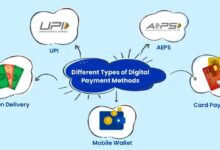Are you feeling burdened by high-interest debt? You aren’t alone if this sounds familiar – credit card bills, payday loans and other debts with steep interest rates can be crushing. In this article we’ll present five practical strategies for taking back control over finances to make high-interest debt more manageable; including discussing why unsecured loans might provide invaluable aid along this process.
I. Assess Your High-Interest Debt
Before trying to tackle high-interest debt, it’s essential that you gain a complete picture of the situation. Take some time now to compile all your obligations with high rates such as credit card balances or short-term loans into a comprehensive list. By knowing exactly which obligations exist within this grouping of high-interest loans you can create a more efficient plan to deal with them.
Understanding high-interest debt is vitally important. Credit cards with interest rates that quickly add up can often prove problematic as paying them back can seem like an endless cycle, which often contributes to feelings of helplessness and despair.
II. Create a Budget
One key step toward taking back control of your finances is creating an organized budget. Budgeting allows you to keep an accurate record of both income and expenses, providing a more precise view of where funds should go – whether for debt relief, savings, or just general spending needs. Budgeting may appear daunting at first, but don’t allow that fearful perception to prevail; budgeting doesn’t need to be daunting.
Simply begin by listing all your income sources and monthly expenses – then create an outline budget plan from there. Identify areas where you can cut unnecessary spending to free up funds for debt repayment. This might include dining out less frequently, canceling unused subscriptions, or finding more affordable alternatives for certain expenses.
III. Consider High-Interest Debt Refinancing
Refinancing high-interest debt can significantly decrease interest rates and the total cost of debt repayment. Refinancing involves applying for a new loan with better terms to pay off existing high-interest loans; although refinancing may be beneficial in many instances, it’s wise to weigh the potential advantages and disadvantages carefully if considering unsecured loans as part of this strategy.
Refinancing debt may make payments more manageable and is essential when budgeting to repay debts more easily. Examine how refinancing will impact your overall finances before proceeding; lower interest rates could lower monthly payments making repayment easier to budget for.
IV. Tackle Debt Strategically
Managing high-interest debt strategically can help you make noticeable progress. Two popular methods for doing this are the debt snowball and debt avalanche methods. The debt snowball method focuses on paying off the smallest debts first to build momentum, while the debt avalanche method prioritizes the debts with the highest interest rates. Choose the strategy that aligns with your financial goals and preferences.
Both the debt snowball and debt avalanche methods can be effective, but it’s essential to understand the nuances of each. The debt snowball method can provide a psychological boost as you pay off smaller debts, giving you a sense of accomplishment. The debt avalanche method, on the other hand, minimizes the overall interest you’ll pay over time.
V. Seek Financial Guidance
Sometimes, dealing with high-interest debt may require professional guidance. Credit counseling services can provide you with expert advice on managing your finances and debts. Credit counseling services can assist with developing an action plan to get out of debt and provide valuable insight into budgeting and repayment of high-interest debt.
Consulting one may also be advantageous, particularly if managing such high-interest debt is becoming overwhelming for you alone. These professionals can negotiate with creditors on your behalf, helping to reduce interest rates or establish more manageable repayment plans.
VI. Explore Debt Consolidation Options
Debt consolidation is a powerful strategy to simplify your financial life and reduce the burden of high-interest debt. It involves combining multiple debts into a single, more manageable payment. There are several debt consolidation options available, including balance transfers and unsecured loans. Unsecured loans are particularly appealing because they do not require collateral, making them accessible to those without valuable assets.
Conclusion
High-interest debt can be daunting, but with smart strategies in place, you can regain control over your finances. We have presented five smart techniques here from creating a budget to investigating debt consolidation options that could make an immense difference when managing your debt more effectively. Take action and start implementing these strategies today to achieve financial freedom and relieve the strain of high-interest rates.








